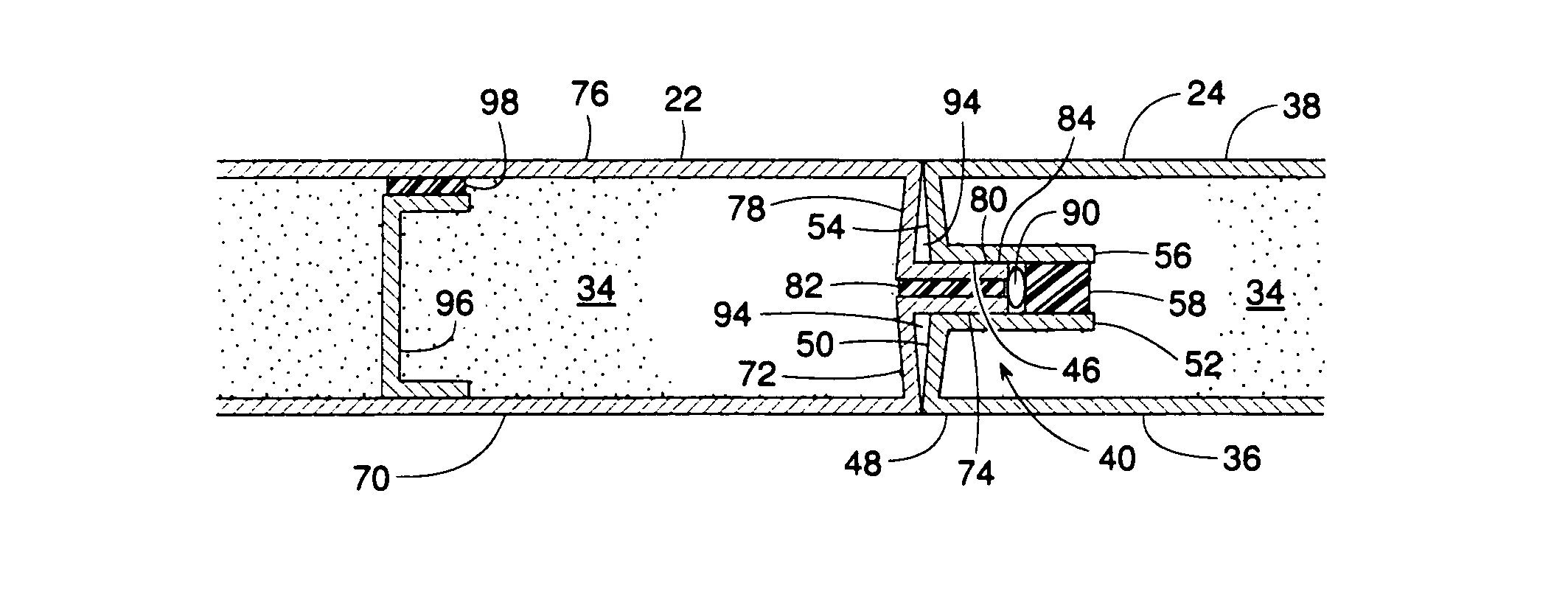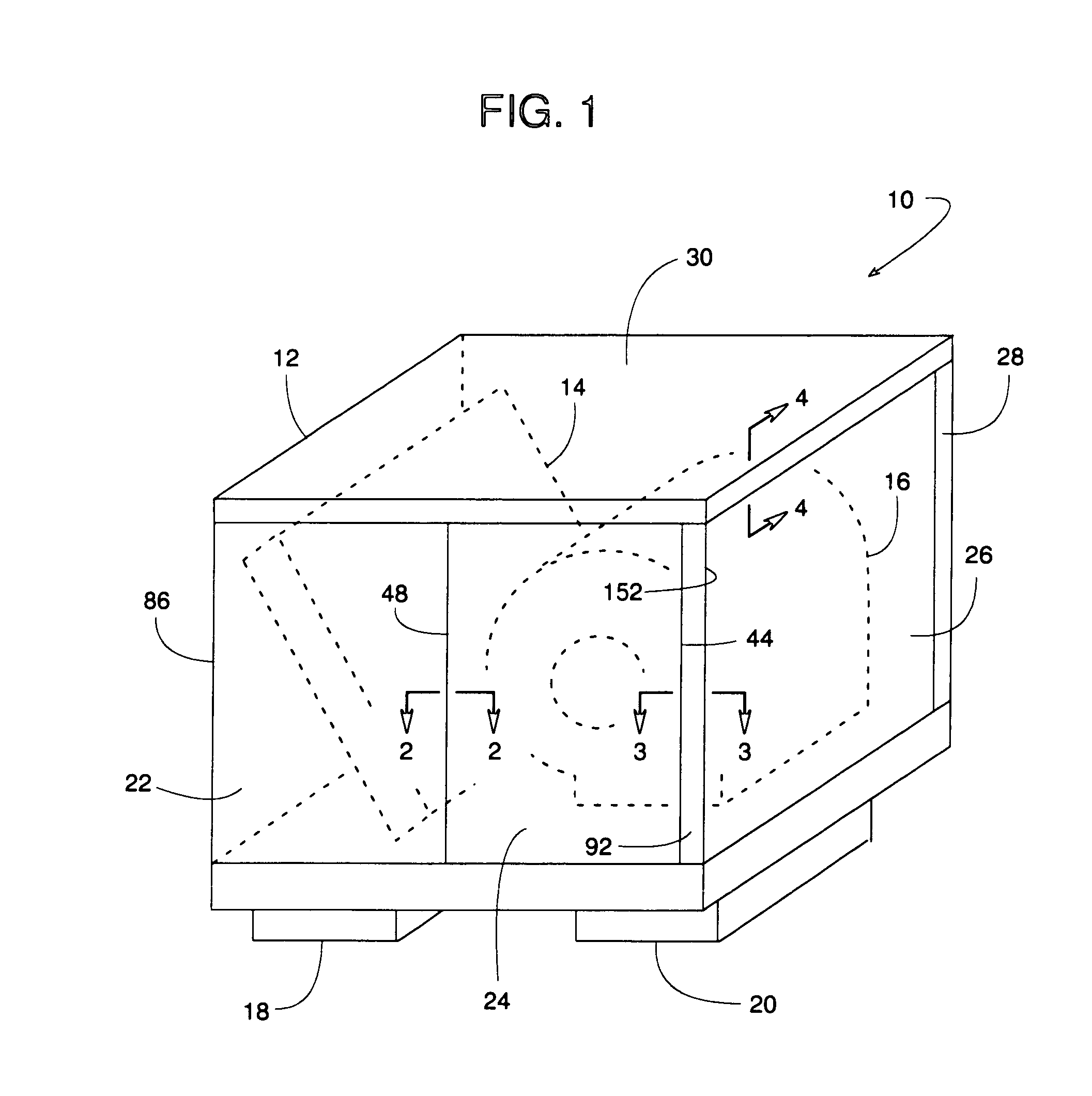Thermal break and panel joint for an air handling enclosure
a technology of panel joints and air handling enclosures, which is applied in the direction of transportation and packaging, heating types, lighting and heating apparatus, etc., can solve the problems of localized heat loss that may still occur at the uninsulated metal-to-metal joint, inconsequential system overall efficiency, and condensation on the join
- Summary
- Abstract
- Description
- Claims
- Application Information
AI Technical Summary
Benefits of technology
Problems solved by technology
Method used
Image
Examples
Embodiment Construction
[0022]FIG. 1 shows an air handler 10 comprising an enclosure 12 that contains a heat exchanger 14, a blower 16, compressor, filter, or some other type of HVAC equipment. Enclosure 12 is open to an inlet 18 and an outlet 20 for conveying air across the equipment housed within the enclosure. The equipment inside enclosure 12 is used in some manner to handle or condition air associated with an HVAC system. Since a temperature differential usually exists between the enclosure's interior and exterior, enclosure 12 is preferably insulated.
[0023]Enclosure 12 can be made of any number of insulated panel assemblies 22, 24,26, 28, and 30 that have a thermal insulating core sandwiched between inner and outer panel sheets. The inner and outer panel sheets are held together with double-sided tape. The tape also provides a thermal break where adjoining panel assemblies come together at a tongue-and-groove joint. Details of some embodiments of assemblies 22, 24, 26, 28, and 30 are shown in FIGS. 2...
PUM
 Login to View More
Login to View More Abstract
Description
Claims
Application Information
 Login to View More
Login to View More - R&D
- Intellectual Property
- Life Sciences
- Materials
- Tech Scout
- Unparalleled Data Quality
- Higher Quality Content
- 60% Fewer Hallucinations
Browse by: Latest US Patents, China's latest patents, Technical Efficacy Thesaurus, Application Domain, Technology Topic, Popular Technical Reports.
© 2025 PatSnap. All rights reserved.Legal|Privacy policy|Modern Slavery Act Transparency Statement|Sitemap|About US| Contact US: help@patsnap.com



